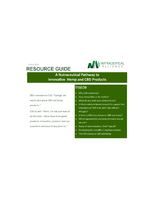Nanolithography System helps build nanoscale structures.
Share:
Press Release Summary:
NSCRIPTOR(TM) DPNWriter(TM) system allows researchers to build patterns, layers, and structures with virtually any molecule, at resolutions less than 15 nm with spacing as close as 5 nm. System includes closed-loop scanning with low thermal drift, 3-point leveling between scanning plane and sample, and InkCAD control for design, writing, and imaging capability. Environmental Chamber provides integrated temperature and humidity control.
Original Press Release:
NanoInk Introduces NSCRIPTOR DIP Pen Nanolithography System
New nanofabrication tool enables researchers to build nanoscale structures of virtually any material with a versatile and easy-to-operate system
Chicago, Ill., April 29, 2003 - NanoInk, Inc. today unveiled NSCRIPTOR(TM), its entry-level DPNWriter(TM) system that redefines molecular manufacturing. Using the patented Dip Pen Nanolithography(TM) (DPN(TM)) nanofabrication process, researchers
can build patterns, layers and structures - with virtually any molecule - at resolutions less than 15 nanometers (nm) with spacing as close as 5nm.
"NanoInk's tools are set to be a driving force for the nanotechnology revolution, because in order to create any number of products, researchers and companies will need to use our process," said Ray Eby, Vice President of Product Development of NanoInk. "NanoInk is the only company capable of enabling people
to build at the nanoscale using virtually any material. This is an exciting time for us and for the industry."
NanoInk's first tool allows dedicated DPN experiments based on fully functional commercial scanning probe microscope (SPM) systems. The hardware system used for the NSCRIPTOR DPNWriter is designed to provide optimal performance for both molecular writing and reliable image acquisition. The system hardware, optimized for nanolithography, leverages state-of-the-art scanning probe capabilities, robust industrial design and complete environmental control.
The NSCRIPTOR system is a complete package solution with:
o InkCAD system control for total design, writing and imaging capability
o Closed-Loop Scanning with excellent linearity and low thermal drift
o Three-point Leveling between the scanning plane and sample
o Environmental Chamber for integrated temperature and humidity control
o Calibrated ink diffusion using InkCal(TM) for reproducible results
o Integrated micro- and nanoscale alignment using InkFinder(TM)/InkAlign(TM) routines enabling ready interchange of ink and pen systems
Available immediately, the NSCRIPTOR system includes three days of on-site installation and training with on-going applications development support available on a contract basis from NanoInk's science team.
More information on NSCRIPTOR including a brochure is available by email request to info@nanoink.net or as a PDF from the website: nanoink.nel.
About the DPN Technique
The DPN technique is a pattern-making process that was initially developed using the invisibly small tip of a scanning probe microscope (SPM). Functioning much like a quill pen, this microscopic tip is coated in molecules. The molecules are then deposited onto a surface made of silicon, gold, glass, or other material to create nanometer scale structures.
DPN technology can be used with virtually any molecule or "ink" and patterned onto virtually any surface, or "paper." In addition, DPN technology is capable of extremely precise alignment. The universality of the process makes it very attractive not only as a research tool but also a viable industrial process.
About NanoInk, Inc.
NanoInk, Inc. develops and licenses Dip Pen Nanolithography, a platform process for nanoscale fabrication (in the region of 10 nanometers) using virtually any material. Established in 2001 in Chicago, Ill., the venture-backed company has a strong intellectual property portfolio comprising agreements with Northwestern University and Stanford University as well as patents of its own. NanoInk partners with corporations and research institutions to use its proprietary technologies as
nanomanufacturing and research tools. For more information, see
www.nanoink.net.




